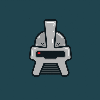How do you think about Snap?
I'm very beginner of Linux server admin. Few days ago I set up snap version of nextcloud server app on my own Ubuntu VPS server, and I found that Snap system might be focused to build original file system hierarchy in /snap directory, and I felt a little weird about that.
For example, Linux file system hierarchy is defined to set server app config into /etc/app/conf.d or so.
But snap version app tend to set it into /snap/app/current/app/config or so.
It sounds so complicated for me.
So I want to know about how Snap is thought by others. I'm happy if you might tell me something here.













Add comment